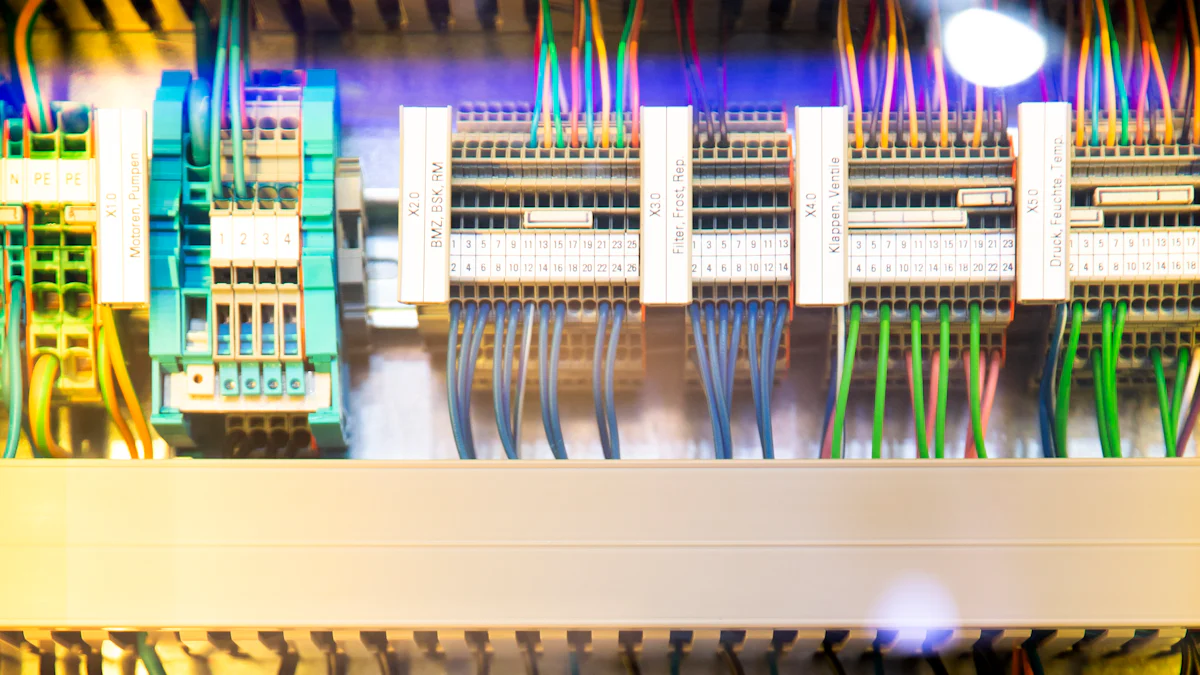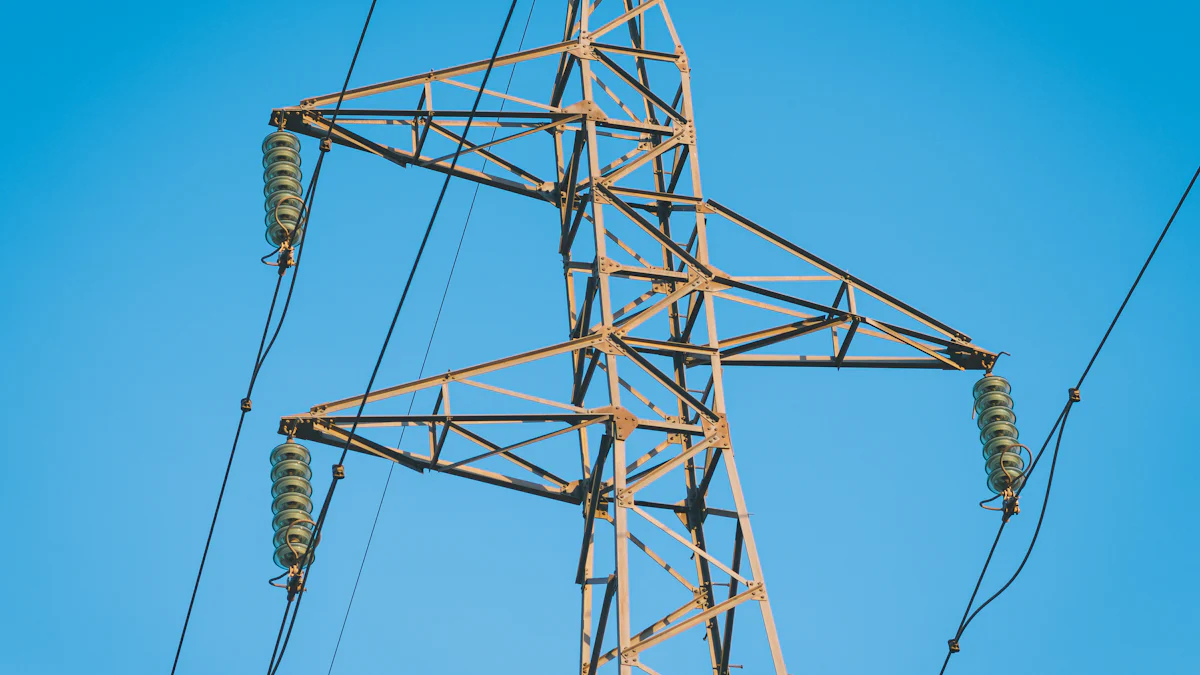Traditional Low Voltage Solutions vs Flexible DC Power Distribution: A Comparative Analysis

Power distribution systems are vital to modern infrastructure, ensuring efficient energy flow and maintaining Power Quality Management. Traditional low voltage solutions have long been the backbone of these systems. However, the emergence of flexible DC power offers new possibilities. This comparative analysis aims to explore the differences between these two approaches. It will delve into aspects like 3-phase Imbalance Compensation, Reactive Power Compensation, and Energy Interconnection. By understanding these elements, stakeholders can make informed decisions about Distribution Network Optimization and Harmonic Control, ultimately enhancing Three-Phase Imbalance Compensation.
Understanding Traditional Low Voltage Solutions

Components and Specifications
Key Components
Traditional low voltage systems rely on several key components to function effectively. These systems typically operate at voltages of 50 volts or less, with common levels being 12V, 24V, and 48V. Low Voltage Electrical Components include switches, relays, and transformers, which are essential for managing and distributing power. These components ensure that electrical devices receive the appropriate voltage, preventing damage and ensuring efficient operation.
Voltage Levels and Standards
Low voltage systems adhere to specific standards to ensure safety and compatibility. The components used in these systems must be listed by a Nationally Recognized Test Laboratory (NRTL) and comply with UL2577 requirements. This certification guarantees that the components meet safety and performance standards. Low Voltage Wiring transmits electricity at 50 volts or less, making it suitable for residential applications like doorbells, garage door openers, and home security systems.
Design Considerations
Safety and Compliance
Safety is a paramount concern in the design of traditional low voltage solutions. These systems must comply with regulatory standards to prevent electrical hazards. Proper insulation and grounding are crucial to avoid short circuits and electrical shocks. Compliance with safety standards ensures that the systems operate reliably and protect users from potential risks.
Efficiency and Performance
Efficiency plays a significant role in the performance of low voltage systems. These systems aim to minimize energy losses during transmission and distribution. By using appropriately sized components and wiring, designers can enhance the efficiency of the system. This results in reduced energy consumption and lower operational costs, making low voltage solutions an attractive option for residential and commercial applications.
Installation Processes
Typical Installation Steps
The installation of traditional low voltage systems involves several steps to ensure proper functionality. Installers begin by assessing the electrical needs of the property and selecting suitable components. They then lay out the wiring, ensuring it meets the required voltage levels and standards. Finally, they connect the components and test the system to verify its performance and safety.
Challenges and Solutions
Installing low voltage systems can present challenges, such as navigating complex wiring layouts and ensuring compliance with safety standards. Property owners and managers may encounter outdated components that no longer function properly. To address these issues, installers must carefully plan the installation process and select components that meet current standards. Regular maintenance and upgrades can also help overcome these challenges, ensuring the system remains efficient and reliable over time.
Exploring Flexible DC Power

Components and Specifications
Key Components
Flexible DC Power Distribution Devices play a crucial role in modern energy systems. They manage power efficiently across various applications, ensuring smooth energy flow. These devices include components like Low Voltage Regulators, which enhance reliability and flexibility. Unlike traditional systems, they eliminate mechanical wear and provide fast response times. This quick adaptation to changes in power demand makes them highly efficient.
Voltage Levels and Standards
Flexible DC power systems operate at different voltage levels compared to traditional systems. They often use higher voltages, such as 750Vdc, to reduce line losses. This approach allows for more efficient energy transmission over long distances. Standards for these systems ensure safety and compatibility with existing infrastructure. Compliance with these standards guarantees that the systems perform reliably and safely.
Design Considerations
Safety and Compliance
Safety remains a top priority in the design of flexible DC power systems. These systems must adhere to strict regulatory standards to prevent electrical hazards. Proper insulation and grounding techniques are essential to avoid short circuits and electrical shocks. By complying with safety standards, these systems protect users and ensure reliable operation.
Efficiency and Performance
Efficiency is a hallmark of flexible DC power systems. They optimize energy distribution, reducing energy losses during transmission. By using advanced components and technologies, these systems enhance performance and lower operational costs. This efficiency makes them an attractive option for both residential and commercial applications.
Installation Processes
Typical Installation Steps
Installing flexible DC power systems involves several key steps. Installers first assess the energy needs of the site and select appropriate components. They then lay out the wiring, ensuring it meets the required voltage levels and standards. Finally, they connect the components and test the system to verify its performance and safety.
Challenges and Solutions
Installation of flexible DC systems can present challenges, such as integrating with existing infrastructure. Installers may encounter compatibility issues with older components. To address these challenges, careful planning and selection of compatible components are essential. Regular maintenance and upgrades help ensure the system remains efficient and reliable over time.
Comparative Analysis
Efficiency and Performance
Energy Losses
Energy losses occur in both traditional low voltage solutions and flexible DC power systems. However, flexible DC devices often demonstrate superior efficiency. They optimize energy distribution and improve transmission capacity, reducing energy losses significantly. In contrast, traditional low voltage systems may experience higher losses due to their reliance on older technologies and components. By minimizing energy losses, flexible DC systems enhance overall performance and contribute to more sustainable energy use.
Load Management
Load management plays a crucial role in the efficiency of power distribution systems. Flexible DC power systems excel in this area by offering advanced load management capabilities. They adapt quickly to changes in power demand, ensuring a stable and efficient energy supply. Traditional low voltage systems, while reliable, may struggle with load management due to their limited flexibility. The ability of flexible DC systems to manage loads effectively makes them a preferred choice for modern energy needs.
Safety and Compliance
Regulatory Standards
Both traditional low voltage solutions and flexible DC power systems must adhere to strict regulatory standards. These standards ensure the safety and reliability of power distribution systems. Flexible DC systems often meet or exceed these standards due to their advanced design and technology. Traditional systems, while compliant, may face challenges in keeping up with evolving regulations. Compliance with regulatory standards remains essential for both systems to prevent electrical hazards and ensure user safety.
Risk Mitigation
Risk mitigation is a critical aspect of power distribution systems. Flexible DC power systems offer enhanced risk mitigation features, such as real-time monitoring and fault detection. These features help identify and address potential issues before they escalate. Traditional low voltage systems, although equipped with basic safety measures, may lack the advanced risk mitigation capabilities of flexible DC systems. By prioritizing risk mitigation, flexible DC systems provide a safer and more reliable energy solution.
Cost Implications
Initial Investment
The initial investment for flexible DC power systems can be higher compared to traditional low voltage solutions. This is due to the advanced technology and components used in flexible DC systems. However, the benefits of improved efficiency and performance often justify the higher upfront costs. Traditional systems, with their lower initial investment, may appeal to budget-conscious stakeholders. Yet, they may not offer the same level of efficiency and adaptability as flexible DC systems.
Long-term Savings
Long-term savings represent a significant advantage of flexible DC power systems. Their ability to reduce energy losses and optimize load management leads to lower operational costs over time. Traditional low voltage systems, while initially less expensive, may incur higher maintenance and energy costs in the long run. By investing in flexible DC systems, stakeholders can achieve substantial long-term savings and enhance the sustainability of their energy infrastructure.
Future Prospects
Technological Advancements
The future of power distribution systems hinges on technological advancements. Flexible DC devices stand at the forefront of innovation. They optimize energy distribution and improve transmission capacity. This technology enhances the efficiency of power systems, making them more adaptable to modern energy needs. In contrast, traditional Low Voltage Regulators focus on reliability and efficiency but may not match the adaptability of flexible DC systems.
Emerging technologies promise to revolutionize power systems further. Innovations in Fault Tolerance and Stability ensure reliable performance. These advancements minimize disruptions and enhance system resilience. As technology evolves, power systems will likely become more efficient and robust, meeting the demands of a growing energy market.
Market Trends
Market trends indicate a shift towards more sustainable and efficient energy solutions. The demand for Flexible DC power systems continues to rise. These systems offer superior efficiency and adaptability, aligning with the global push for sustainable energy. Stakeholders recognize the long-term benefits of investing in flexible DC systems, despite higher initial costs.
The integration of renewable energy sources into power systems also influences market trends. Flexible DC systems support this integration, providing a seamless transition to greener energy solutions. As the market evolves, stakeholders must stay informed about these trends to make strategic decisions. By embracing technological advancements and market shifts, they can enhance the sustainability and efficiency of their energy infrastructure.
Advanced Features of Flexible DC Power
3-phase Imbalance Compensation
Mechanisms and Benefits
Flexible DC power systems excel in addressing Three-Phase Imbalance Compensation. They employ advanced mechanisms to monitor and adjust the current flow across phases. This real-time monitoring ensures that the system remains balanced, even under varying load conditions. By driving IGBT bridges, these systems generate the necessary current to achieve balance. This approach minimizes energy losses and enhances system stability.
The benefits of Three-Phase Imbalance Compensation are significant. It reduces wear and tear on electrical components, extending their lifespan. Additionally, it improves the overall efficiency of the power distribution system. This feature makes flexible DC power systems an attractive option for modern energy needs, where reliability and efficiency are paramount.
Reactive Power Compensation
Techniques and Applications
Reactive Power Compensation is another key feature of flexible DC power systems. These systems utilize advanced techniques to manage reactive power effectively. By analyzing the reactive power content of the load current, they can generate compensation currents using PWM-controlled IGBT devices. This process ensures that the power factor remains optimal, reducing energy losses and improving system performance.
The applications of Reactive Power Compensation are diverse. It plays a crucial role in industrial settings, where large motors and equipment require precise power management. By optimizing reactive power, flexible DC systems enhance the efficiency of these operations. This capability aligns with the global trend towards more sustainable and efficient energy solutions.
Energy Interconnection
Integration and Efficiency
Energy Interconnection represents a significant advancement in flexible DC power systems. These systems facilitate power sharing between different distribution stations, maximizing the absorption rate of renewable energy sources like photovoltaic (PV) systems. By transferring surplus electricity from one station to another, they ensure efficient energy utilization.
The integration of Energy Interconnection enhances the overall efficiency of power distribution networks. It supports the seamless transition to greener energy solutions, aligning with market trends that emphasize sustainability. As the demand for smart power distribution systems grows, flexible DC power systems offer a robust solution that meets the evolving needs of the energy market.
This comparative analysis highlights the strengths and limitations of both traditional low voltage solutions and flexible DC power systems. Flexible DC Power Distribution Devices offer superior efficiency, adaptability, and support for renewable energy integration, making them a forward-thinking choice for modern infrastructure. In contrast, traditional systems provide reliability and cost-effectiveness for established applications.
The implications for industry are significant. Flexible DC systems enhance grid stability and reduce reliance on fossil fuels by optimizing renewable resource use.
Ultimately, the choice between these systems depends on specific needs and future goals, with flexible DC power paving the way for sustainable energy solutions.
See Also
Innovative DC Power Distribution Device: Transforming Power Consumption
